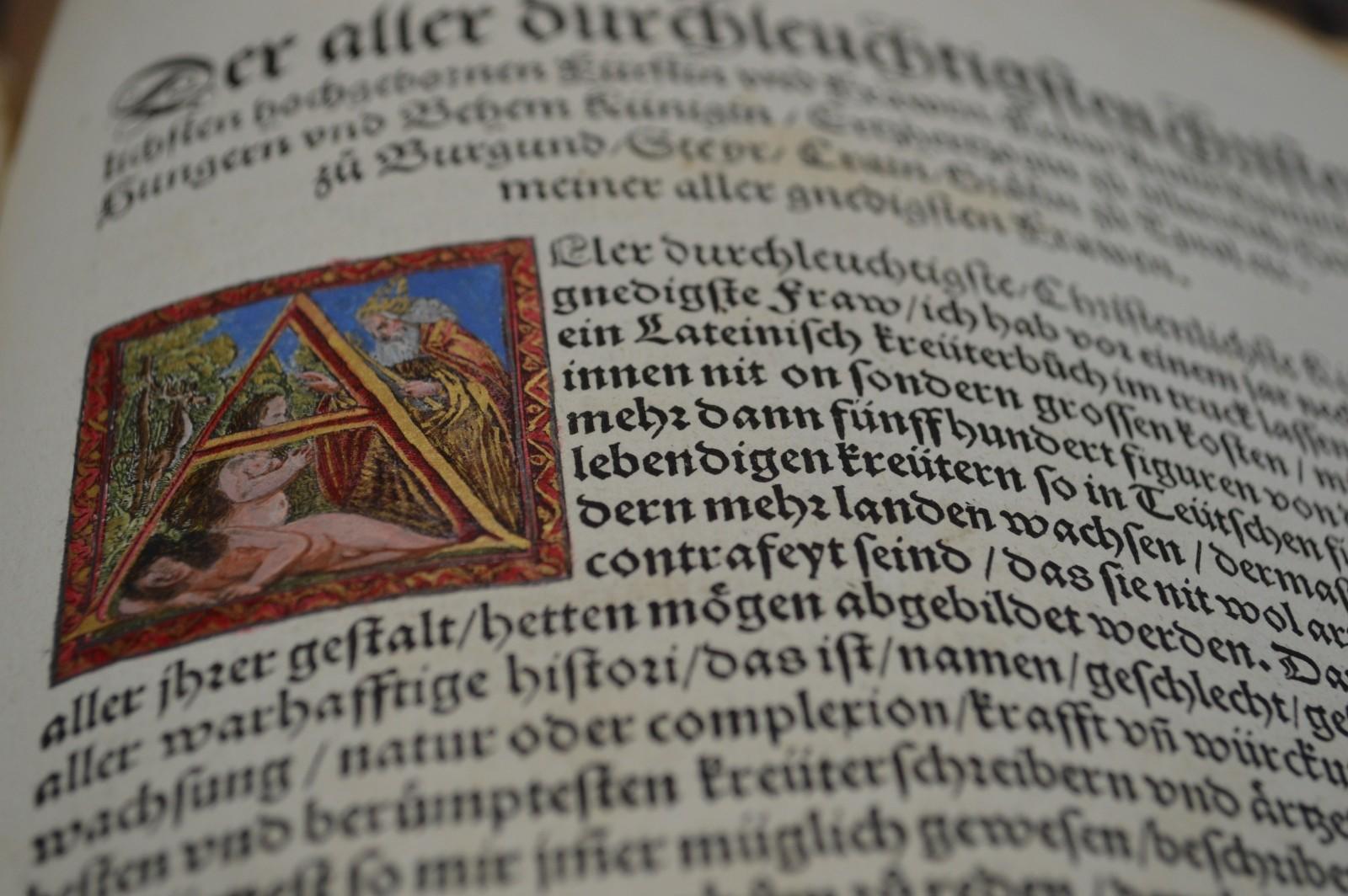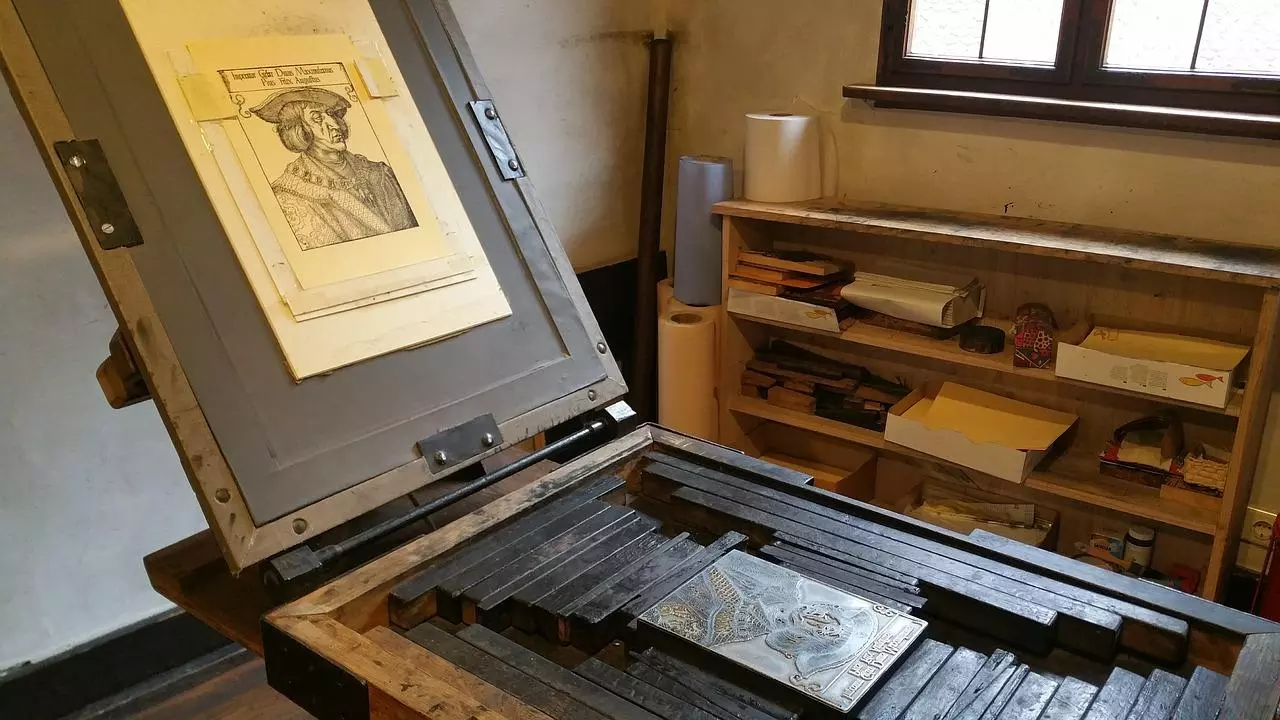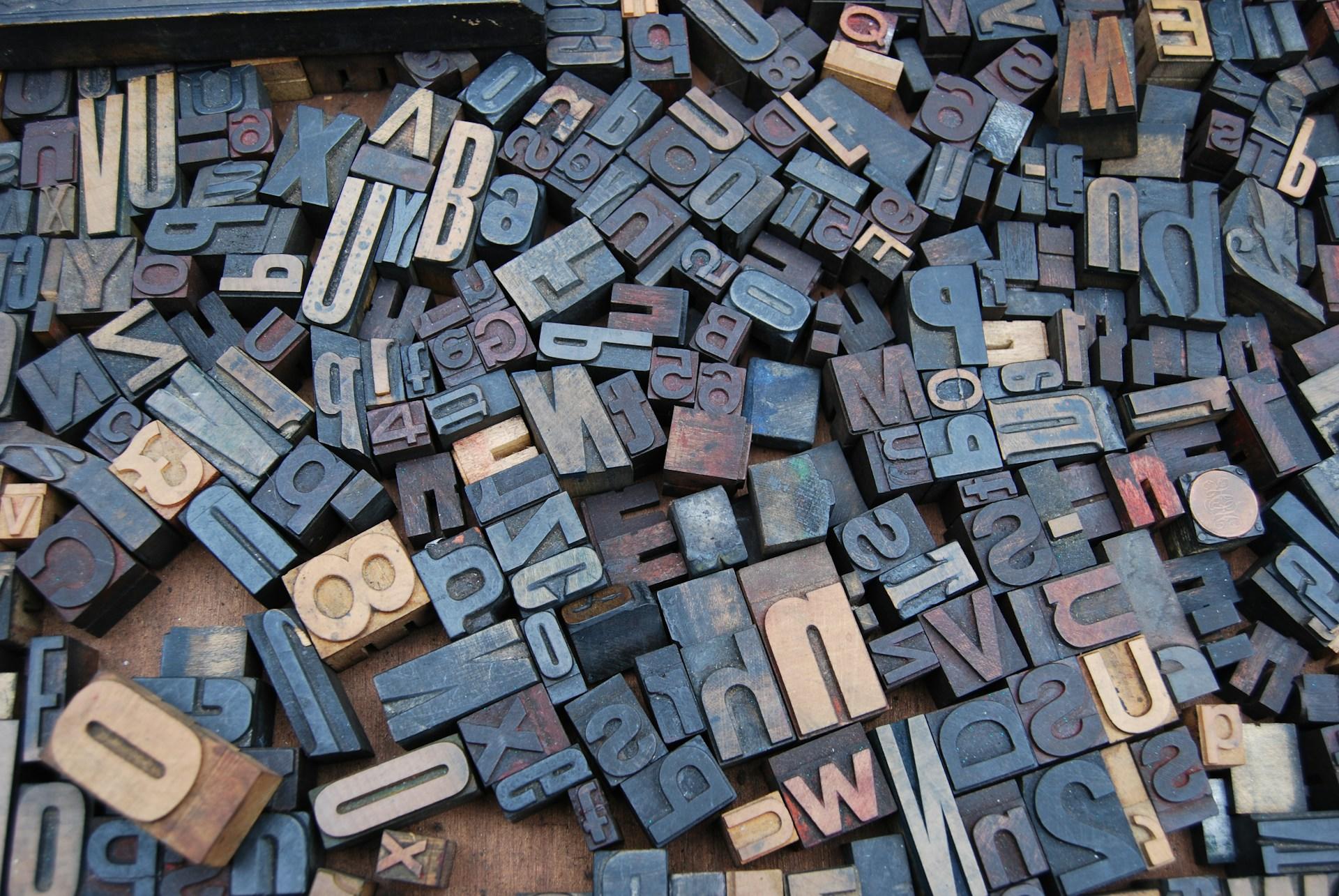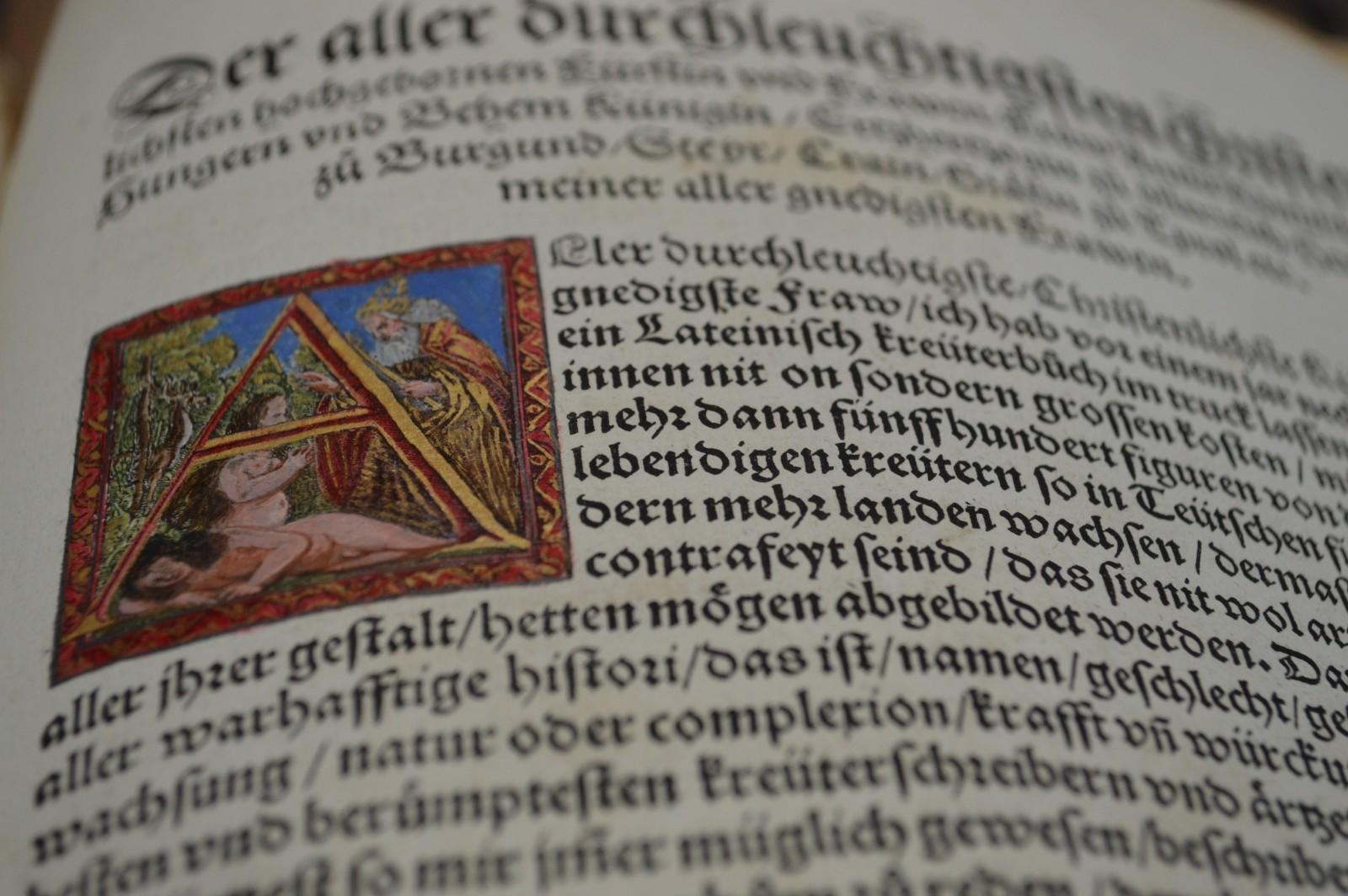The Latin alphabet was not invented from scratch, on the contrary, it was the result of thousands of years of evolution, assimilation and improvements. The writing of upper and lower case characters was also influenced and modified many times before eventually becoming the system we use today.
The Latin alphabet, the basis of the Latin language, was created around the 6th century BC in Italy. It is known across almost all Western countries. At the time, the writing direction was not exactly defined. Inscriptions were written from right to left on a fibula (a gold pin); in other cases, they are written from left to right, or alternating between a line from left to right and one from right to left.
There were nineteen letters in the beginning
The graphics were very simple and revealed a mixed Phoenician, Greek and Etruscan origin.
The history of the Latin alphabet and the origins of the Latin alphabet are not easy to get your head around, but we have created an overview for you to better understand how these letters have endured the centuries.

Overview of the Latin Alphabet
The Latin alphabet's evolution has been hard to track and historians have spent a long time trying to work out exactly how the alphabet has reached the stage where it is today.
This table shows the letters of the alphabet, which were in the original alphabet, where they came from, and the proper way to pronounce them.
| Uppercase | Lowercase | Pronunciation (IPA) | Introduction to Latin Alphabet |
|---|---|---|---|
| A | a | /eɪ/ or /æ/ | Present in early Latin alphabet, derived from Greek 'alpha'. |
| B | b | /biː/ | Present in early Latin alphabet, from Greek 'beta'. |
| C | c | /siː/ or /k/ | Present in early Latin alphabet, from Greek 'gamma'. |
| D | d | /diː/ | Present in early Latin alphabet, from Greek 'delta'. |
| E | e | /iː/ or /ɛ/ | Present in early Latin alphabet, derived from Greek 'epsilon'. |
| F | f | /ɛf/ | Present in early Latin alphabet, influenced by the Etruscan letter 'F'. |
| G | g | /dʒiː/ or /g/ | Introduced around the 3rd century BCE as a modification of 'C'. |
| H | h | /eɪtʃ/ | Present in early Latin alphabet, adopted from the Greek letter 'eta'. |
| I | i | /aɪ/ or /ɪ/ | Present in early Latin alphabet, from Greek 'iota'. |
| J | j | /dʒeɪ/ | Added in the Middle Ages (around the 16th century) as a variant of 'I'. |
| K | k | /keɪ/ | Present in early Latin alphabet, but rarely used in classical Latin. |
| L | l | /ɛl/ | Present in early Latin alphabet, derived from Greek 'lambda'. |
| M | m | /ɛm/ | Present in early Latin alphabet, from Greek 'mu'. |
| N | n | /ɛn/ | Present in early Latin alphabet, from Greek 'nu'. |
| O | o | /oʊ/ or /ɒ/ | Present in early Latin alphabet, from Greek 'omicron'. |
| P | p | /piː/ | Present in early Latin alphabet, from Greek 'pi'. |
| Q | q | /kjuː/ | Present in early Latin alphabet, likely from Greek 'koppa'. |
| R | r | /ɑr/ or /r/ | Present in early Latin alphabet, from Greek 'rho'. |
| S | s | /ɛs/ or /z/ | Present in early Latin alphabet, from Greek 'sigma'. |
| T | t | /tiː/ | Present in early Latin alphabet, from Greek 'tau'. |
| U | u | /juː/ or /ʌ/ | Added in the 16th century, previously written as 'V'. |
| V | v | /viː/ | Present in early Latin alphabet, but originally represented both 'U' and 'V' sounds. |
| W | w | /ˈdʌbəl.juː/ | Introduced in the 7th century as a double 'U' (written as 'VV'). |
| X | x | /ɛks/ | Present in early Latin alphabet, derived from Greek 'xi'. |
| Y | y | /waɪ/ | Borrowed from Greek in the 1st century BCE for foreign words. |
| Z | z | /ziː/ or /zɛd/ | Reintroduced in the 1st century BCE; it had been dropped earlier in classical Latin. |
Some important notes about the table above include:
- The original Latin alphabet lacked J, U, and W, which were added later to distinguish different sounds.
- The letter G was added later to differentiate it from the hard "C" sound.
- Y and Z were borrowed from Greek to better represent sounds in words borrowed from Greek.
Etruscan, the Ancestor of the Latin Alphabet
The writing systems were born in different parts of the globe and at different times, whether in Mesopotamia, Egypt, China or Central America. We must remember that our alphabet comes from Canaan, in a region that today corresponds to the Middle East (Lebanon, Israel, Syria, Jordan, Sinai).

Our alphabet has a Semitic origin. Originally, Egyptian hieroglyphs were used to gradually build the alphabet that we know today. We used a consonantal pseudo-hieroglyphic alphabet. At the same time, long before the modern Latin dictionary, cuneiform writing was born in Phoenicia.
The consonants were dominant as well. Later, the Greeks took this Phoenician alphabet and added vowels to adapt it to their language.
The Greek alphabet gave birth to the Etruscan alphabet which is where the alphabet we use today comes from. The Etruscans came a priori from Asia Minor according to Herodotus but this theory is not confirmed.
The Etruscans arrived in Tuscany around the 7th century BC and would have adopted the Greek alphabet to transcribe a language that remains a mystery to this today. Indeed, experts are still not able to understand and translate it, even though they know how to read it.
The Etruscan civilization spread throughout Italy and little by little the Etruscan alphabet was imposed everywhere in Europe, in pace with Roman conquests. All other local languages and scriptures then disappeared. In the 3rd century BC, there were 19 letters to the alphabet. The, X, Y and Z are not adopted until later, directly inherited from Greek.
The Etruscan alphabet contained useless letters according to the phonological system of the Etruscan language. We know that the vowel "O" was not used, but found its place among the Romans.
Explore our top tips to guide you in learning how to write in Latin.

Latin Alphabet: The Roman Writing System
Writing at the time of the Roman Empire was reserved for recording the history of great men. Indeed, we often see epitaphs from this time inviting readers to glorify the person buried.
Thus, the democratization of writing did not take place under the Romans and the literacy rate is estimated at only 30% of male adults. Children, boys and girls, learn to read and write from a magister, but this education is reserved for prestigious families. There was often a religious significance to knowing how to read and write in Roman times.
Indeed, it was thought that developing one's intellect could ensure a better life after death and even bestow immortality. We found a lot of mediums where Latin and Latin declination were present: walls and slabs, often wax. Very few parchments were found, primarily because it was tough to get a lot of them at the time.
It is only between the 1st and the 5th century that the use of papyrus parchments started to spread, giving rise to a new form of writing: the codex. Punctuation did not exist at this time and to help speakers in their speech, breaks were simply marked by taking a new line.
There were only capitals in the Latin alphabet until the Carolingian period (9th century) when writing gradually took a step away from the spoken word and lowercase letters were introduced.

The Latin Alphabet: From Uppercase to the Arrival of Lowercase
In the context of the Roman conquest, writing spread and evolved. We are far now from the Phoenician alphabet and the Semitic language of its beginnings. There are two kinds of the capital letters:
- Capitalis rustica (1st century BC), characterized by a certain freedom and a slender line,
- Capitalis quadrata (IVth century), characterized by a greater discipline and a square form.
The quadrata style was mainly used to write the first books on scrolls, called codex (many scrolls or papyrus put together). It was written using a reed pen or a feather quill. Quadrata was reserved for important texts and manuscripts as it was more time consuming than the cursive style. Every letter is shaped, squared, and is well proportioned. This style is close to the Roman square capital style but abbreviations are rare and there are no dots or punctuation marks between words.

The Rustica writing style was used between the 1st and the 9th century. It was an improved form of the quadrata style. Still mainly using a reed pen it was sometimes engraved into brass, ivory or stone as it was smaller than the Roman square capital style. Letters were narrower than the quadrata writing and it had more rounded shapes.
The writing was used to transcribe poems like those of Virgil and literary stories, but it was also a way of conveying the merits of citizens on the city walls and immortalizing speeches in bronze or stone.
Being used for letters, diplomas, graffiti and even sales contracts, it soon became rounded, and simplified and links are gradually made between the letters. The height of capital letters start to differ giving rise to the writing style called Roman cursive. Lowercase appears in the third century as a result of vulgar writing (of the people) in Latin languages.
Learn how to speak Latin with our guide on Latin pronunciation.
The letters, which were originally very square, become progressively more round, especially in Christian religious texts. It was Charlemagne who endorsed the use of lowercase letters to establish his authority when he came to power in 771. He thus began a reform of writing.
All texts must now be copied in caroline minuscule. Our current form of writing stems from this standardization.
A Brief History of the Latin Alphabet: Key Moments
7th Century BCE
Latin takes shape
The Latin alphabet begins to take shape, adapted from the Etruscan alphabet, which in turn was derived from the Greek alphabet. At this point, there are 21 letters in the Latin alphabet, excluding J, U, W, Y, and Z.
3rd Century BCE
Letter G introduced
The letter G is introduced to the Latin alphabet. Originally, the letter "C" represented both the "k" and "g" sounds, but G was added to distinguish between them.
1st Century BCE
Y and Z introduced
The letters Y and Z are reintroduced into the Latin alphabet, borrowed from Greek to accommodate the growing number of Greek loanwords in Latin. These letters had previously been removed but were brought back for linguistic reasons.
7th Century CE
W introduced in Anglo-Saxo England
The letter W is introduced by scribes in Anglo-Saxon England. It was initially represented by "VV" (double U) and was used to distinguish the "w" sound from the "v" sound.
16th Century CE
J and U introduced
The modern forms of J and U are established. Until this time, "I" and "V" served dual purposes, representing both vowel and consonant sounds. These changes completed the alphabet as we know it today.
Some Interesting Facts About the Roman Alphabet
In the first centuries of using the Roman alphabet, inherited from the Phoenicians and a long way from the hieroglyphs of Ancient Egypt, several facts are noteworthy:
- There was no distinction between the U and the V. Only the V existed as the writing was still very square at this time,
- The letter G did not exist. The consonant C expressed both the phonemes /k/ and /g/, inherited directly from Greek,
- The letter K was redundant with the letter C and was kept only in a few words and when in front of an A,
- The letter Z did not exist as it was rendered useless due to phonetic changes,
- The letter Q was a variant of the letter K, used only in front of a U.

In its archaic version, the Latin alphabet had 20 letters: A, B, C, D, E, F, H, I, K, L, M, N, O, P, Q, R, S, T, V, X.
Whereas in its classical writing, after the 3rd century, it had 23: A, B, C, D, E, F, G, H, I, K, L, M, N, O, P, Q, R, S, T, V, X, Y, Z.
You will note the absence of the letters J, U and W which appear later on, as the rounding of letters and their usage develops.
The Arrival of the Printing Press and the Modern Evolution of Our Alphabet
Since the appearance of writing in Mesopotamia and its evolution from the Arabic alphabet to ancient Greek through Hebrew and Slavic languages, the classical letters of the Latin alphabet have undergone a lot of evolution. It was in fact the Renaissance that brought about the greatest change in writing forms with the birth of printing. Until then manuscripts were all handwritten. With the printing press, books became more widespread.

But after this, we didn't suddenly stop writing by hand. On the contrary, several writing styles were developed:
- Gothic style: letter of civility (15th century),
- The financial (15th century),
- The round (17th century),
- The bastard (17th century),
- The casting (17th century),
- The English: from the Italian bastard, it is easier to draw and faster to write (18th century).
Until the twentieth century, it is the latter which served as a basis for writing in schools. Today, the letters are still changing. Just look at the current tags to be convinced. Since the advent of computer science (a tool through which you can consult Latin quotations for free), the Latin alphabetical system is recognized first.
Learn More About Language and Latin with Superprof
Whether you want to understand the origin of some common English words with Latin origin or you're just looking for a better overview of our language, Superprof can help! Our tutors have a wealth of experience in language and its history.
Additionally, if you are studying Latin at school or you are interested in the language as a hobby, our tutors can provide the guidance you need about the history of the Latin alphabet, Latin letters, and the way language was used (and has evolved since). Reach out to a tutor today to learn more!























